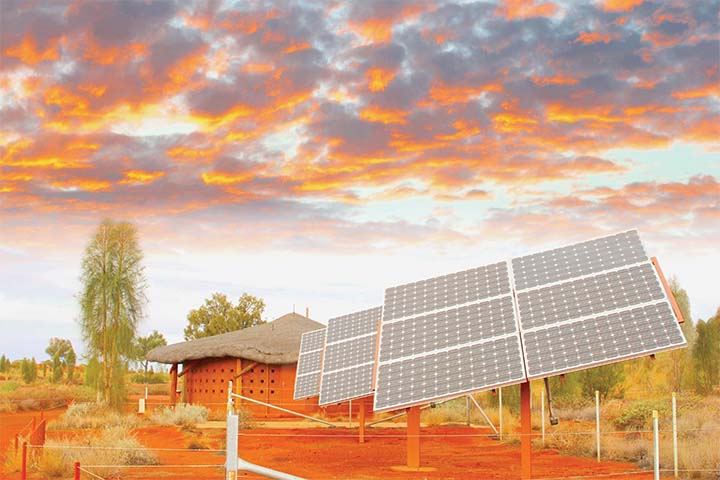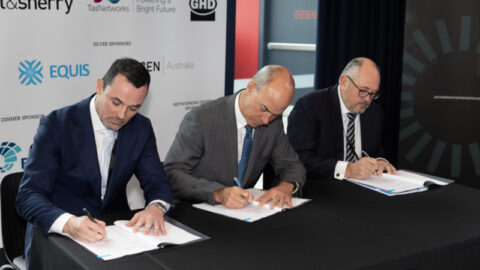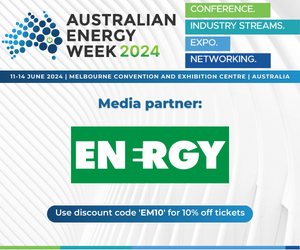by Michelle Goldsmith, Contributing Editor, Energy Magazine
As the amount of solar and wind generation in electricity networks increases, so does the need for accurate forecasting of the energy provided to the grid. Inaccurate estimates can have severe consequences for renewable energy companies, consumers and power supply. However, advanced weather modelling, which can predict the near-future behaviour of clouds, provides a solution. Energy spoke to Solcast CTO and co-founder, Dr Nick Engerer, about how high-tech cloud watching leads to renewable energy innovation.
When intermittent renewable energy sources, such as solar and wind farms, are integrated into electricity networks, energy operators require accurate forecasts of the energy they will provide to ensure the smooth operation of the grid.
Otherwise, weather events like a sudden storm blocking out the sun’s rays may cause an unexpected drop in electricity supply, requiring the deficit to be made up by other power sources. Previously, the models used for these estimates had limited accuracy, sometimes causing large discrepancies between expected and actual supply.
Large-scale solar and wind farms are subject to penalties from the Frequency Control Ancillary Services (FCAS) market for forecasting error,” said Dr Engerer. “Historically, they could only use the internal Australian Energy Market Operator (AEMO) models for estimates, respectively ASEFS and AWEFS, which is Australian Solar or Wind Energy Forecasting System.
It was identified that site operators were better placed to understand local conditions and forecast output at the site.” In light of this issue, the renewable energy providers and the AEMO began a process of consultation to develop a solution that would be beneficial to the industry.
“What that ended up culminating in was some rule changes allowing wind or solar farms to provide their own forecasts for the dispatch interval. So every five minutes they’d provide their own dispatch target, and they could leverage more accurate technologies for solar or wind forecasting. That change was really important for the market.”
Forecasting future weather now Solcast has been at the helm of a number of key projects to develop and deploy technologies to enable more accurate forecasting. These include the $2.63 million Real-Time Operational PV Simulations project, which received $1.19 million from ARENA and spanned from 2016 to 2019.
This project involved deploying advanced modelling to provide low voltage network operators (DNSPs) with high resolution solar energy forecasting data mapped to their electricity networks.
Solar forecasting technology developed by Solcast was used to detect, track and predict the future positions of cloud cover through the use of weather satellites and numerical weather models. The resulting solar radiation forecasts could then be converted to power output predictions.
In 2020, Solcast was awarded $994,000 by ARENA for a $2.91 million Gridded Renewables Nowcasting Demonstration project in South Australia. This project will demonstrate improved ‘nowcasting’ (i.e. five minutes to six hours ahead) using an advanced gridded, rapidly-updating, spatially aware forecast model, providing much more accurate estimates than could be gleaned via existing numerical models
that only update a few times a day.
These improved forecasts are shared with the AEMO, the local distribution network operator (SA Power Networks), energy retailers (Snowy Hydro and Energy Australia) and generator asset operators, via project partners, Weatherzone and TESLA Asia Pacific.
“Situational awareness and operational forecasting are critical functions for AEMO as the generation fleet becomes increasingly weather dependent and we continue to observe evolving market trends with the rapid uptake of renewable energy,” said AEMO Chief Operations Officer, Michael Gatt.
“It might be useful to think of it as version one and version two,” said Dr Engerer. “We have deployed version one globally, including across all of Australia. We’ve done that since 2016 really. But what we’re doing in South Australia with the funding from ARENA is working on improving the solar forecasting with version two, where we’re modelling how clouds are likely to change over the near term.
“You can think of version one as mapping where clouds are now, identifying their features, and then moving them forward in space and time, but not knowing whether or not they’re going to grow or shrink, or change shape in the near future. Clouds do that a lot, particularly during thunderstorms or other weather events.
“Version two is working with other meteorological information to determine whether clouds are likely to get bigger, or to shrink, or to change their shape, and including that in the near-term forecasting.
“There are a few other components, we’re also engaging with the short-term wind energy forecasting challenges. We’re also trying to engage temperature forecasting, for example. But in this South Australian project, it’s strictly limited to the wind and solar components for now.
“Having an additional source of rapidly updating forecasts is helping AEMO identify risks and uncertainty to assist management of the power system in South Australia,” said Mr Gatt. “One of the biggest challenges this project is helping to develop capability of, is the forecasting of the timing and magnitude of ramping events, such as movement of large cloud banks over South Australia which can quickly impact rooftop solar generation.”
By predicting renewable energy generation in the near-future horizon, including ramping events and periods of suppressed generation, the technology enables operators to proactively manage voltage fluctuations, overcoming one of the key challenges that may otherwise limit renewable energy penetration in electricity networks.
The results coming in from the SA nowcasting project demonstrate the advanced forecasting model’s ability to predict previously unforeseeable weather events. “The South Australian grid has one of the highest penetrations of renewables in the world,” said Dr Engerer.
“This has raised the stakes for getting forecasts wrong. It’s required an advancement in the capabilities of updating forecasts quickly, providing them accurately, capturing the latest cloud cover conditions, delivering them in real time, and continually updating them every time we get new information from the weather satellites.
“Really, what we’re trying to do is improve the accuracy of predicting fast-moving, fast-changing cloud cover events, particularly. The emphasis is on those because they are the ones that change the availability of solar the most quickly and by the largest amount.
“For instance, we recently had a cloud front go through South Australia that the existing forecasting systems missed. That meant they couldn’t predict the 450 megawatt drop in power from rooftop solar.
That’s like a whole coal power plant turned off without warning. “If you don’t predict that ramp down, it can mean the market is unexpectedly short on energy. This means that other facilities have to be drawn upon through the spot market. It makes electricity more expensive.
It also reduces the security of the system, because that kind of drop can also lead to other bigger problems in the network such as grid instability. “Our model was able to predict the cloud front. It’s those events we want to get right. And that event showed that we can do that.”
Predicting the unpredictable
The enhanced forecasting abilities of Solcast’s model are particularly advantageous in situations of a high uptake of renewable energy in localities with extremely changeable weather. Such conditions are not restricted to Australia, and innovative real-time forecasting technology has applications around the globe.
“Solar is growing around the world nearly everywhere,” said Dr Engerer. “As the installation of solar picks up, local energy markets begin to require some level of forecasting. They might need a forecast for an hour ahead, two hours ahead, a day ahead, or like in Australia, five minutes ahead.
How you engage with that problem actually changes a bit, depending on how far ahead you’re trying to forecast. We’re very well suited to doing all of those horizons, but particularly very good at what’s going to happen in the next few minutes to the next few hours.
“The second ingredient relates to the actual climate. We know that there are situations that are harder to forecast than others. If you have a lot of complex terrain around – hills, valleys – this makes the meteorology much more difficult, because you get clouds forming in the mountains, you get fog forming in the valleys and the local meteorology is much more chaotic.
A great example is the interactions with warm ocean currents like in Florida, United States, where there are thunderstorms nearly everyday in spring and summer. Anywhere that has convective storms also becomes quite challenging to forecast.
“For example, one of the places that we operate our services is in Taiwan. In summer thunderstorms happen daily. It’s impossible to have a perfect forecast in those conditions. So you have to work with the network operators you’re providing the forecast for to help them understand the limitations. It’s more than just providing a forecast, it’s helping users understand how to interpret the data.”
Looking to the future, Dr Engerer envisages demand for advanced forecasting technology to continue to increase, both within Australia and around the world, as solar penetration continues to grow.
“South East Queensland and Western Australia are not far behind South Australia in their need for improved technologies in this space. So an eventual nationwide rollout is absolutely the plan. “In some regions the right causes and conditions have come together to drive growth in solar really quickly.
We provide services in Taiwan, we’ve also done so in Vietnam, those are two really good examples of the government putting out some incentives, and investment coming in from mature, knowledgeable markets to build those facilities and get them up and going. It happens really fast. Ukraine is another great example. And as soon as that comes in, the people responsible for the power system need access to this technology.”
Dr Engerer sees the development of the technology as a continuous process of improvement and refinement, as knowledge cumulates from projects like that underway in South Australia. The capabilities of the near-future forecast modelling provide an exciting example of Australian projects and expertise reaping benefits significant to energy markets worldwide, and demonstrate how, through stakeholders coming together in such projects, the technological limitations of existing systems can be overcome.

Solar panels in desert under colorful sunset sky clouds, sun energy and electricity generation in Africa. Investment project to reduce greenhouse gas emissions

















